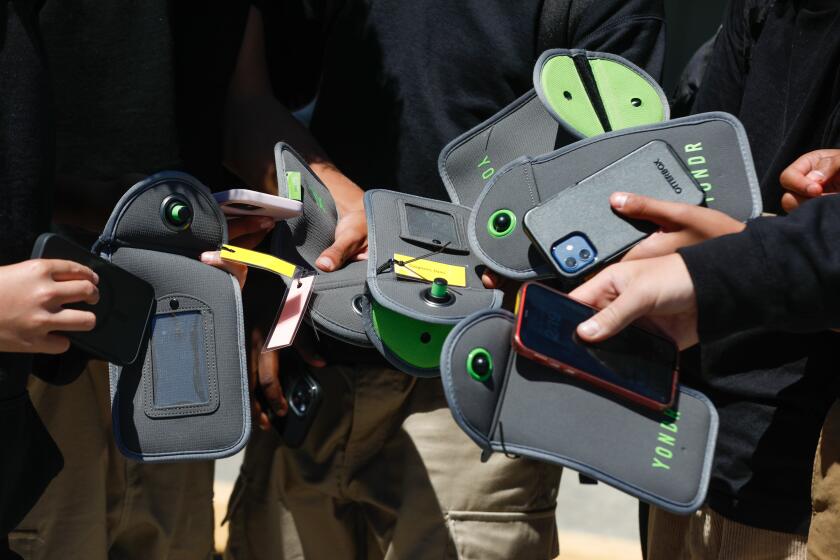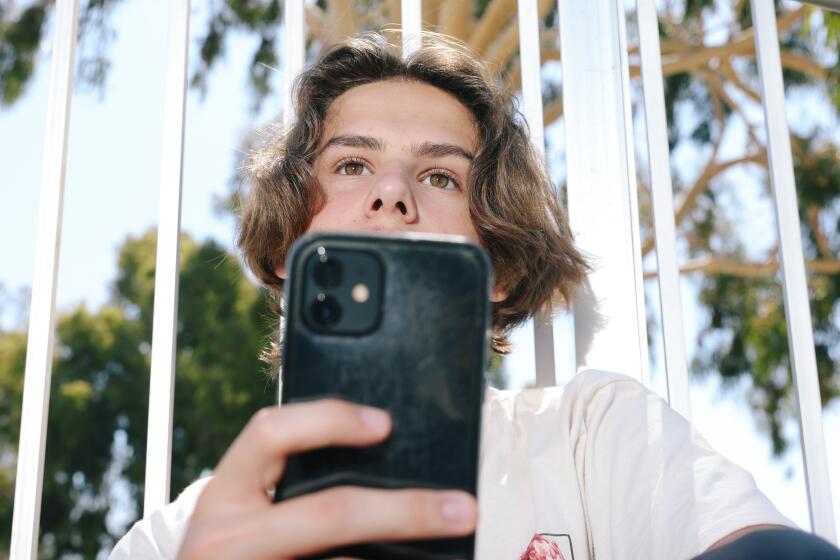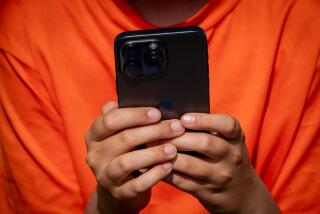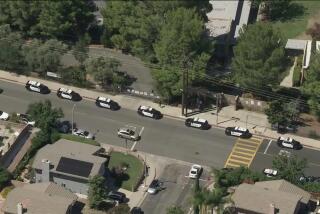Confiscation. Calls home. Sealed pouches. Why schools struggle to ban cellphones
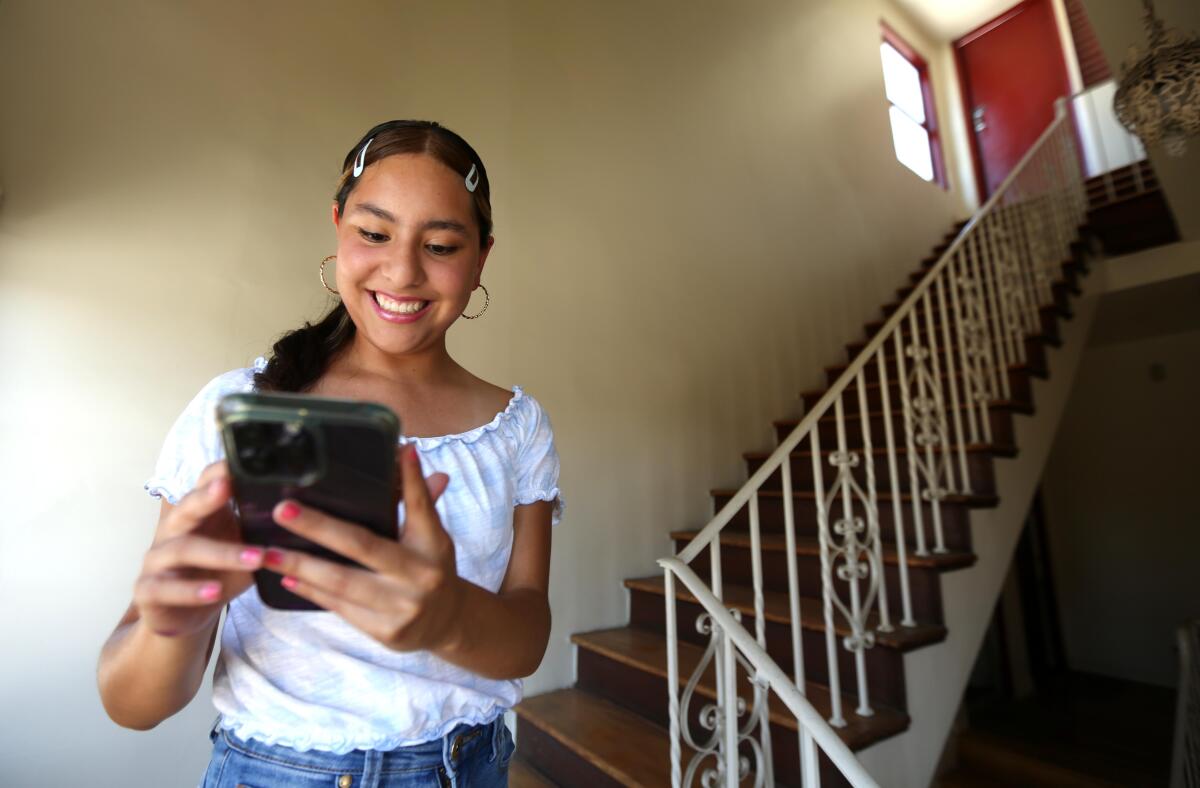
- Share via
- Educators agree that schools should limit cellphones but disagree on how.
- California schools must have phone plans by July 2026. The law leaves the rest open.
- L.A. schools will ban phones Feb. 18 but face questions on phone storage and student discipline.
SACRAMENTO — There’s little disagreement on what needs to be done: California schools must ban or restrict cellphones that disrupt learning.
A law signed by Gov. Gavin Newsom mandates every school district in the state devise a plan for campus cellphone bans or restrictions by July 2026. But educators, who gathered recently with Newsom over the issue, say their biggest debate is over how to enforce limitations on a generation obsessed with their phones.
Newsom, a father of four, including two teens, says he knows the allure of phones. His preference, he said in an interview, would be “a ban throughout” the entire school day, lunch included, at schools across the state. And he wants rules in place “a lot earlier” than the deadline.
LAUSD says its student cellphone ban will start Feb. 18. Schools will decide how to restrict phones, from telling students to put them in backpacks to using magnetically sealed pouches.
“I have my point of view, sure, but I don’t think it’s appropriate to impose that,” Newsom added, saying local school leaders will decide.
He spoke at the governor’s mansion during a convening of superintendents, teachers, parents, policy aides and health experts to chart out how California students can break free of their phones.
“You got a crisis in this country that predated COVID ... issues of social isolation, this sort of unmooring in society and people feeling more lonely than ever the more connected they are on their devices,” Newsom said.
Schools are the ideal places to attempt a massive cultural shift, he and others said. And California — with some 1,000 school districts and 5.8 million students — will be the nation’s largest test case.
Ban phones in early years
About 95% of teens have access to a cellphone, according to a survey the Pew Research Center released this year. Roughly 6 in 10 surveyed said they use TikTok, Instagram or Snapchat, and about 40% said they spend too much time on their phones.
Also, a majority of teens said phones make it easier to pursue hobbies and express creativity; nearly half said phones help them do better in school.
But the pervasiveness of cellphone use in schools calls for early crackdowns, experts said.
“Middle school is probably the fertile ground for this... High school will be hard,” said LAUSD Board member Nick Melvoin, who sponsored the strict Los Angeles Unified School District ban that will take effect in February. L.A. schools now are sorting out the rules.
The California Legislature approved a statewide cellphone ban this week. LAUSD schools that have had bans in place for years provide a window into the future.
Dr. Sohil Sud, director of the state’s Children and Youth Behavioral Health Initiative, described the tween and teen years as “a time with increased emotional sensitivity and a strong desire for validation by peers,” where uniform rules at schools are more likely to be successful.
“We’re not quite at the mercy of ‘group-think,’ but what the group thinks and does matters a lot,” Sud said. “That’s why rules limiting phone usage in a consistent manner for all in a given setting like schools are more likely to be effective than individual approaches by individual parents, or even individual teachers.”
It also may be easier to change phone culture, experts said, in a middle school setting simply because there tend to be fewer kids in a tighter age span compared to high school.
Since a 2020 law Newsom signed, schools have had the power to limit or prohibit smartphone use with some districts forging ahead. They offered advice for the future.
Initially they confronted resistance. But it eventually dissipated.
The San Mateo-Foster City district in the Bay Area initiated a strict cellphone ban in 2021, when students returned to campus after pandemic school closures, a time when they were more digitally reliant than ever. Students place phones in magnetically sealed Yondr pouches as they enter campus. The phones stay in backpacks or pants pockets. At the end of the school day, students tap the pouches on a magnetic unlocking base as they exit campus. It’s similar to when a cashier at a clothing store taps a piece of clothing to remove a magnetic anti-theft device.
The district is made up of 11,000 students across 22 schools, all at the elementary and middle levels, which made creating a phone-free culture easier because students were just beginning to get phones.
At first, dozens either refused or forgot to put their phones in pouches as they entered school. Teachers asked ones caught using phones in class to turn over the devices. Those who refused were sent to an administrator’s office to call their parents and fess up to breaking the rule.
“But we never connected it to discipline. No kids got suspended or kicked out of class,” district Superintendent Diego Ochoa said.
In a district where students are all assigned Chromebooks and Google-based email accounts, students figured out a workaround. “They were using Google Chat and Google Spaces while in class,” Ochoa said. The district then disabled those features.
Over time, complaints and violations faded. The district has also reported a decline in student suspensions overall and conflicts related to social media, such as bullying.
Here’s are the details of California’s Phone-Free Schools Act, approved by lawmakers and sent to Gov. Gavin Newsom. Get ready for a massive change for cellphone-obsessed students.
“We are not attributing everything to cellphones,” San Mateo-Foster City district board member Gene Kim said. But he said at least some of the improvements were tied to the phone-free environment.
The Santa Barbara schools district launched a no-phone policy in January 2023. Instead of buying pouches for thousands of students, it saved money by using “phone hotels” in classrooms that have assigned numbers where students place their devices. Phones are allowed at lunch and between classes.
Officials in Santa Barbara allowed phone use outside of class because they wanted teens to learn to “self-regulate” their relationship to the devices, said Superintendent Hilda Maldonado.
“Are kids still using phones? Absolutely. When I walk into a school, I see them texting and looking at their screens during lunch,” Maldonado said. “But they aren’t rushing after class to grab their phones like candy.”
What about enforcement?
Their most difficult issue, educators said, is enforcement and discipline.
Nothing in the state law directs schools to punish students for violating policies or what the discipline would be.
School districts have taken different stances on discipline overall, with Los Angeles having a “restorative” model that prioritizes dialogue before punishment, which so far is limited to phone confiscation.
One of the biggest concerns, educators said, is that teachers don’t want to confiscate phones because they don’t want to be responsible if the phone is damaged or lost.
Students, whose cellphones are an extension of their very being, mull pending L.A. school ban of the devices with praise and frustration.
Teachers don’t want to turn into “cellphone cops,” said Edgar Zazueta, the Assn. of California School Administrators executive director and former chief of external affairs for LAUSD.
Maldonado, the Santa Barbara superintendent, said she initially heard similar complaints from teachers. After administrators told teachers they were “off the hook” for financial responsibility for confiscated devices, it helped relieve “lots of anxiety,” she said. Still, it’s far more common for administrators to call parents than it is for them to confiscate phones.
In Los Angeles schools, questions about discipline have come up as schools speed toward bans. District guidelines spell out a process of multiple warnings for phone violators but are vague on confiscation.
In an interview, Melvoin suggested that violators could be given warnings before phone calls to parents. He said further violations could result in one-period-long confiscations. More violations would require parents to come pick up phones. “I hope, in the next few weeks, the district is more clear on consequences,” he said.
Melvoin predicts a 95% student compliance rate in the district with “5% that will be stubborn.”
When the Santa Barbara ban kicked off in the 12,000-student district last school year, not all students immediately complied. This year, Maldonado said, there has been more interest from teachers, principals, students and parents after seeing the positives of a phone-free environment.
Maldonado said it’s easier to get past the hurdles of students not following swift phone bans “if you start from a focus on mental health and wellness instead of compliance with rules.”
And there will be missteps. In one case, Maldonado said, a substitute teacher incorrectly assumed a student was hiding their phone instead of putting it in the “phone hotel.” I It turned out that the student didn’t have a phone.
‘Going cold turkey’
While phones and social media have addictive qualities, they are different from chemical addictions, experts said. One recent study from the U.K.’s Durham University found that a voluntary social media fast didn’t increase or decrease the appetite to go back online. Other studies found digital detoxes led to reported increases in happiness, attention spans and mental clarity.
Psychologist Jonathan Haidt’s “The Anxious Generation: How the Great Rewiring of Childhood Is Causing an Epidemic of Mental Illness” has become a handbook for the phones-free schools movement. Haidt recommends no cellphones with social media until age 16.
John Piacentini, a UCLA psychology professor who directs the UCLA Center for Child Anxiety Resilience, Education and Support, agreed that teens should delay getting on smartphones.
Piacentini said school bans would work better if teens had models — older siblings and parents at home, as well as teachers — who stopped using phones at the same time.
“Cold turkey is going to be quite difficult for a lot of these kids. But it needs to be done. It’s up to the parents and family to really work with kids to help them learn how to live for periods of time without their phones,” Piacentini, who was not at the Sacramento meeting, said. “Parents are using phones the same way kids are and may be addicted the same way kids are.”
More to Read
Sign up for Essential California
The most important California stories and recommendations in your inbox every morning.
You may occasionally receive promotional content from the Los Angeles Times.

